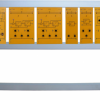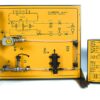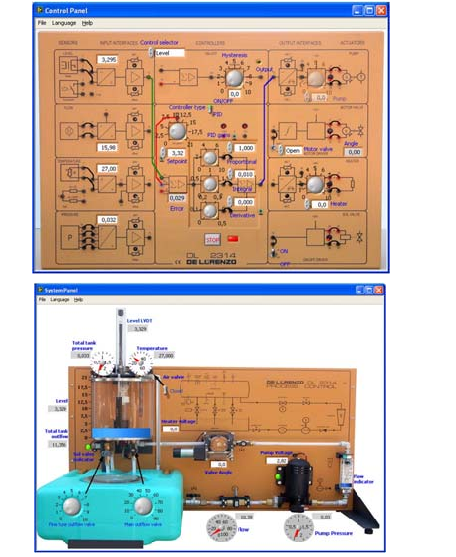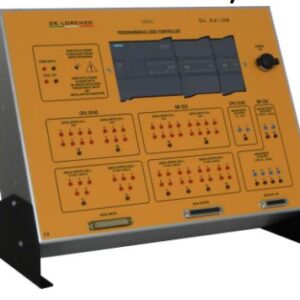Controller
The user can influence the behaviour of the system through the controller. The system is controlled by the following parameters of the actuators:
• Pump: input voltage (0V to 10V)
• Motor driven pump: angle (0° to 40°)
• Heating resistance: input voltage (0V to 10V)
and in the process tank:
• Manual output valve 1: angle (0° to 90°)
• Manual output valve 2: number of rpm
• Solenoid valve: on or off
• Air valve: on or off
The controller is composed of PID and On/Off controls that are used to control the temperature of the water, its pressure and its level inside the process tank.
The parameters can also be manually controlled.
System to be controlled
The system is composed of a didactic plant that consists in a pressurized process tank, a storage tank and a set of sensor and actuators for level, pressure, temperature and flow.
The behaviour of the system is modeled on the basis of the characteristics of the physical components. Under a given supply voltage, the pump creates a flow of water that also depends on the pressure in the system. In the process tank some amount of water may be stored and exert a hydrostatic pressure at the bottom. The process tank is also equipped with an air valve that can be used to control the pressure of the air inside the tank.
The output pressure from the tank is, therefore, the sum of the hydrostatic pressure and of the air pressure. The temperature of the water inside the process tank can be controlled by means of a heating resistance. To influence the pressure in the system also the valves may be used. The storage tank is used to store water for the system and there is atmospheric pressure at its output.
The simulator calculates and presents to the user the following parameters:
• Flow in the system
• Outflow from the process tank
• Pressure exerted on the pump
• Total pressure at the output of the tank
• Level of the water in the process tank
• Temperature of the water in the process tank
PROCESS CONTROL SIMULATION SOFTWARE – DL 2314SIM
Simulation software in LabVIEW environment. The simulator is composed of two parts: the controller and the system to be controlled.
















